2020 Mercedes-Benz GLB 250 Review: Scratching the Niche

The numbers have long stopped, of course: a combination of turbocharging and marketing has seen to that. But the letters, those are still easy to figure out. As you head down the alphabet, the vehicle gets bigger and pricier. It’s pretty top-heavy, with A-, C-, E- and then S-Class models, with the GL prefix for SUVs.
With North America’s love affair with the SUV showing no signs of stopping, it’s little wonder Mercedes has looked to fill those gaps. Not just with the coupe-overs, but now this, the GLB. Mercedes has taken a novel approach with the new model, a mega-practical three-row SUV as one of its most affordable offerings. In doing so, the German brand has gone beyond simple box-ticking: it’s created the model I’d most likely recommend for those wanting a small(ish) SUV from the brand.
What B means
The GLB is the sixth SUV in the Merc lineup. It shares more in common with the smallest of the family, the GLA, including the basic platform as well its engine. That means a choice of either front- or all-wheel drive, though only the latter is available in Canada. North Americans also get a smaller engine lineup than other parts of the world. On these shores your choices are the GLB 250 on test or the warmer GLB 35 AMG. Both use a turbocharged 2.0-liter engine. Here it produces 221 hp and 258 lb-ft of torque—again, same as the GLA—with an eight-speed dual-clutch handling shifting duties. Fuel efficiency is merely okay: the EPA quotes an average of 26 mpg (9.0 L/100 km), and my week with the GLB resulted in 25 (9.4).
Because of its increased size, the GLB is slightly slower than its little brother, needing a quoted 6.9 seconds to hit 60 mph (96 km/h). I wouldn’t hold that against it, as it’s still pretty quick for what is a compact, family-oriented SUV. If you need more oomph, you can opt for the AMG.
FAST FACTS
| Engine: | 2.0L I4 Turbo |
| Output: | 221 hp, 258 lb-ft |
| Transmission: | 8AT, AWD |
| US fuel economy (MPG): | 23/31/26 |
| CAN fuel economy (L/100KM): | 10.2/7.6/9.0 |
| Starting Price (USD): | $37,595 (inc. dest.) |
| As-Tested Price (USD): | $51,785 (est, inc. dest.) |
| Starting Price (CAD): | $45,990 (est, inc. dest.) |
| As-Tested Price (CAD): | $56,765 (est, inc. dest.) |
A sportier GLB seems sort of antithetical after a week with the 250, though. Even on the upsized 19-inch wheels, the GLB rides with a fluid sort of grace you expect of a luxury car. The suspension smooths out the biggest bumps, giving it a comfy ride in the city or on the highway. Feel from the steering wheel is expectedly light, though it responds quickly and accurately. The GLB’s boxy shape makes it easy to place on the road too, with a clear view out front and to the sides. The eight-speed shuffles the ratios smoothly, and beyond its start-up rumble, the four-pot’s noise quickly fades into the background.
To further the point, the GLB’s selectable drive modes don’t do much to improve the default experience. Sure, you can set it to Sport and have the transmission hold gears for longer, but it feels about as natural as eating schnitzel with chopsticks.
Those seven seats*
Look, I should get that asterisk out of the way quickly: while the GLB does come with (optional) seating for seven, that’s not for adults. For that you’ll want the GLE or GLS, the latter of which I recently reviewed. A sticker on the GLB’s door points out the way-back is for those 5’6″ and shorter—but even that seems optimistic. My partner falls into that range but one look at the third row was enough to convince her to not even attempt it.
SEE ALSO: 2020 Mercedes-Benz GLS 580 Review: Wafting WunderkindThat said, it’s not outside the realm of possibilities that a GLB driver would need the third row sometimes. Young families needing to shuttle little ones (and their friends) places, for example. Speccing the additional perches adds 5.5 inches (140 mm) of sliding range for the second row too.
The third row is useful in the same way the second is in a Mustang. You can use it if you really have to, but if you need the additional seats all the time, you’re probably looking at the wrong vehicle.
With a total vehicle length of 182.4 inches, the GLB is less than an inch shorter than the GLC. The wheelbase isn’t far off either, and the GLB is taller. This all translates to lots of space for the first two rows—in fact, the GLB outstretches its bigger brother in both head- and legroom. With the panoramic sunroof and the low shoulder line, it’s positively airy in here.
Storage space is the GLB’s other strength. You won’t fit much in the trunk with the third row up, but drop it (flat) and you’ve got 22.0 cubic feet (623 liters) to play with. Again, that’s more than in a GLC, and the lead extends further when you fold the second row: 62.0 cubes (1,755 L) trumps 56.5 (1,600).
Lots of tech, but gets pricey quick
Like a lot of the new small Mercs, the GLB’s interior is chock-full of tech. And just like in the A and CLA, you’ll want to spend a little more to really get the best.
Our tester has a significant number of options ticked, but is still some way shy of the whole lot. The Premium Package ($2,200 USD / $3,300 CAD) is arguably the most important. This swaps in the two crisp-looking 10.25-inch digital displays, one for the instrument panel and one for the infotainment. Mercedes’ MBUX system powers the whole show, just as good to use here as it has been in every other Benz I’ve driven the last 18 months. With snappy responses, plenty of customization, and—most importantly—numerous ways to interact with it, MBUX makes the GLB’s myriad settings approachable.
SEE ALSO: 2020 BMW X1 xDrive28i ReviewIn Canada, this also adds in the natural-language voice assistant (standard in the US). I still find it too eager here: simply dropping “Mercedes” into a sentence tends to awaken it, though a follow-up “go away” has it doing the most Canadian thing: apologizing. Canadians also get the fun ambient lighting and useful wireless charger in the Premium Package; both are standalone options in the US.
Normally, I don’t see much value in the native navigation systems of cars. The upgraded nav in the GLB is an exception, thanks to its augmented reality feature. This lays arrows overtop a front-camera feed in the central screen, making it much easier to follow navigation. It should be even better in a few years, when the new S-Class’ head-up display version of the tech trickles down into the rest of the lineup.
SEE ALSO: 2021 Mercedes-Benz S-Class Sets New Luxury Tech BenchmarkI could take or leave the exterior upgrades. The larger front intakes and 19-inch alloys look good, but I’m also a fan of the rough-and-tumble base look. The smaller wheels and chunkier sidewalls probably give the GLB an even cushier ride, too.
The one area the GLB loses points is its lack of standard safety features. Automated emergency braking is standard, and blind spot assist is a part of the Premium Package. You’ll need to stump for the Driver Assistance Package (called Intelligent Drive in Canada) to add adaptive cruise control, lane-keep assist, lane-tracing, cross-traffic assist, route-based speed control, and more. A 360-degree camera and parking sensors are additional standalone options.
Verdict: 2020 Mercedes-Benz GLB 250 4MATIC Review
As equipped, my tester stickers for a pre-destination $54,765 in Canada. An equivalent US-spec model would list for $51,785, including destination. That’s a lot of coin, but you’re getting a lot of car. It still undercuts the bigger GLC spec-for-spec too. What you miss out on—the GLC produces more power and torque from its 2.0-liter engine—you gain in more space and a more inviting interior.
The GLB is just as luxurious as its big brother, and is vastly more interesting (and spacious) than competitors like the BMW X1. Drop some of the options, like the more aggressive exterior styling pack, and you can easily end up in the mid-to-high-40s. That’s where I’d consider the GLB’s sweet spot.
Mercedes has created a compelling compact SUV in the GLB. It eschews the cookie-cutter, gap-filling approach the same way the CLS did over a decade ago, which went on to create an entire segment. Don’t be surprised if the GLB sees the same sort of success.
Become an AutoGuide insider. Get the latest from the automotive world first by subscribing to our newsletter here.
LOVE IT
- Squared-off looks
- Versatile 5- or 7-seat layout
- Bright and airy interior
LEAVE IT
- Rear row is kids-only
- Gets pricey fast
- Most active driver assists aren't standard

Kyle began his automotive obsession before he even started school, courtesy of a remote control Porsche and various LEGO sets. He later studied advertising and graphic design at Humber College, which led him to writing about cars (both real and digital). He is now a proud member of the Automobile Journalists Association of Canada (AJAC), where he was the Journalist of the Year runner-up for 2021.
More by Kyle Patrick




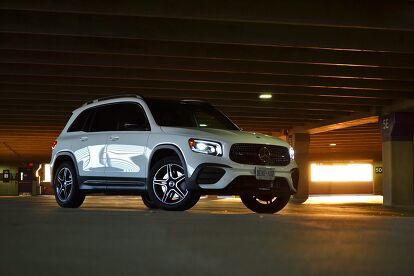






















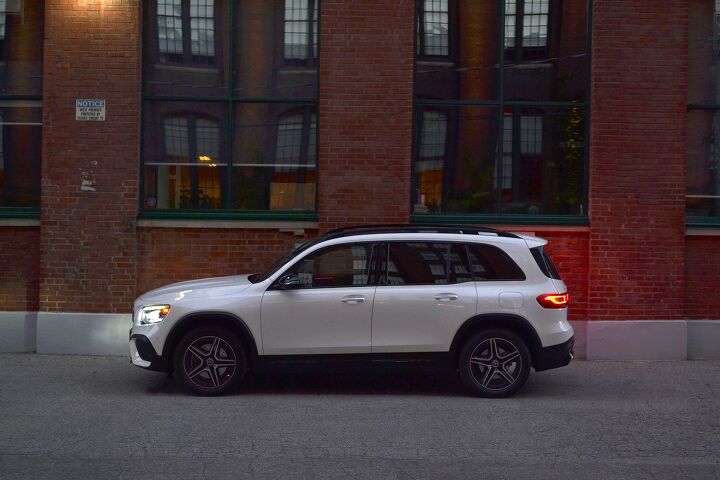

















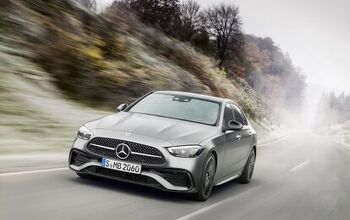
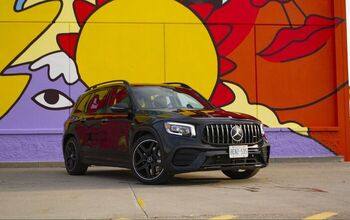
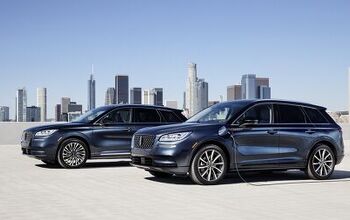


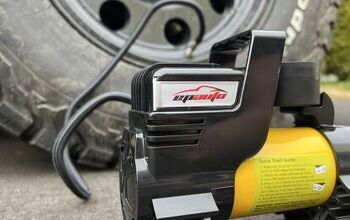



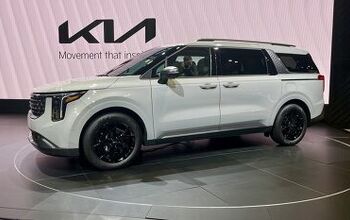

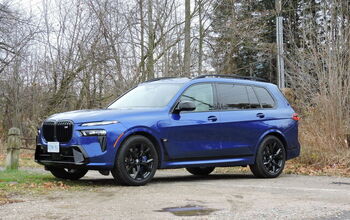
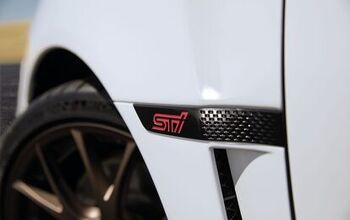


Comments
Join the conversation